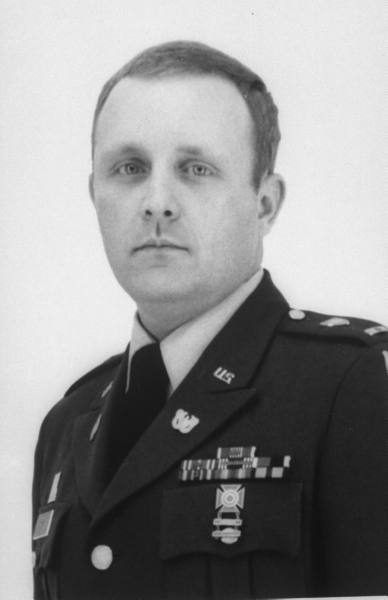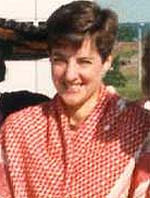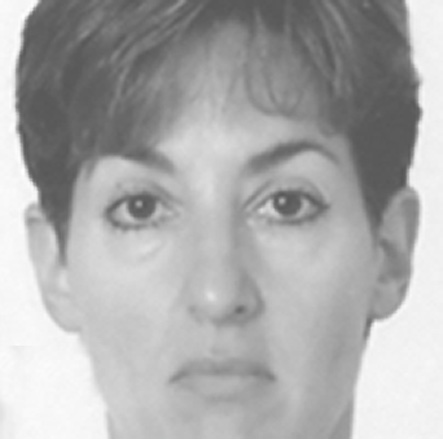Murder and Spies:
A Spy Catcher's Warning
May 20, 2009
CORRECTION GIVEN BELOW
International News
Analysis Today
By Toby Westerman
The national security of the United States is for sale, and every American is in danger as a result, according to a counterintelligence expert who was central to the interrogation and conviction of a spy considered to be one of the most grave threats to national security ever apprehended in the United States.
Chris Simmons, currently a Lt. Col. in the U.S. Army Reserve counterintelligence services and founder of the online Cuban Intelligence Research Center, gave an exclusive interview to International News Analysis detailing the struggle between foreign spy services and the efforts of U.S. spy catchers - the personnel of America's counterintelligence community.
"It's all about resources," said Simmons, who cited a lack of personnel as one of the most difficult problems confronted by U.S. counterintelligence officers. Simmons characterized the number of officers and support staff needed for an effective investigation as "phenomenal."
"At the end of the day it's a numbers game," Simmons told International News Analysis. Simmons cited the example of Cold War spy James W. Hall and the number of professionals needed just to carry out surveillance.

Hall, a U.S. Army warrant officer, was convicted of espionage in 1989, and had spied for East Germany from 1982 to the time of his arrest in 1988. He supplied information on NATO war plans, electronic surveillance techniques, and other damaging information, causing what officials at the time called a "massive hemorrhage" of military secrets to the Soviet bloc.
"During the height of the Hall investigation, sixty counterintelligence personnel were needed just for surveillance," Simmons stated.
The identification of a spy is a "double-edged sword," Simmons explained, because when one spy is found, resources from other investigations are diverted to the most promising case.
The result is that while one spy is caught, others may entirely evade apprehension.
Today, one of the most serious threats to U.S. national security comes from the espionage services of the communist nation of Cuba.
Cuban intelligence is "one of the best in the world," Simmons told International News Analysis -- and the United States is Cuba's only foreign target.
"Cuba is second only to China in its aggressiveness" in penetrating restricted areas of the U.S. government and military, said Simmons. "Cuban intelligence has only two enemies, the United States and the Cuban people."
Simmons stated that over half of Cuba's intelligence network based in the U.S. operates in Florida, with activities directed against both the anti-communist exile community and U.S. military bases located in the state. Penetration of U.S. bases in Florida would provide information on U.S. operations both in the Caribbean and also in the Middle East.
The information acquired by Cuban intelligence, however, is not limited solely to what is useful to Cuba.
"Cuba is an intelligence trafficker," and the information could be traded for weapons from China, oil from Venezuela, or for votes in the United Nations, said Simmons.
In an ominous statement for the security of the United States, Simmons declared "when intelligence becomes a commodity, everything is up for sale," indicating the dangers posed to individual integrity and the safety of the nation.
Cuba is not just after restricted information, but Havana is actively seeking to influence U.S. foreign policy. While Cuba is happy to sell the information it acquires, Cuban intelligence is reluctant to pay for the information it gets.
The ideological spy - the individual who is driven by a cause -- is considered the best investment. Simmons noted that the Cubans avoid those who seek to spy for money, reasoning that a paid spy could easily change sides if the other side becomes more financially attractive.
Cuba seeks those who are ideologically friendly, and is willing to make a considerable investment in time and resources to cultivate virtually any individual considered to be the right kind of espionage candidate. Cuba is willing, if necessary, to wait decades for a spy to rise to a position where he or she will become valuable, Simmons noted.
Before accepting or recruiting an individual, Cuba's intelligence services find out all possible details about the person, and do a psychological inventory of the spy candidate. The acquisition of secrets is important, but the "ideal" candidate is one who can both supply secret information and become a trusted, key member of the American political establishment - an agent of influence.
Simmons indicated that Cuba's intelligence services do much of their recruiting for spies on university campuses, including prestigious schools such as Georgetown, M.I.T., and Johns Hopkins.
The recruiting procedure is simple, but effective. Typically, a professor or a fellow student refers the targeted individual to Cuban intelligence, which carefully investigates the target, and then, if Havana approves, an offer to spy for the communist regime is presented. The careful preparation leading to this point results in a "yes" answer, observed Simmons.

One of the most damaging spies ever to be detected followed this general pattern. Ana Belen Montes was recruited as a university student, and then rose to a very high level position in America's intelligence community. Simmons played a central role in the 2001 apprehension of Montes and her subsequent interrogation and conviction.
The Montes story of betrayal of the United States began around 1985, while she was working in the Justice Department and attending Johns Hopkins University's School of Advanced International Studies. Recruited at Johns Hopkins by Cuban intelligence, Montes transferred to the Defense Intelligence Agency (DIA) where she would be of more use to Havana.
By 1987 Montes was serving in the Central American nation of El Salvador, which at the time was fighting against a ruthless communist guerrilla army known chiefly by its initials, FMLN. Many U.S. military personnel involved in aiding the El Salvador government were debriefed by Montes, the DIA desk officer in that nation.
After debriefing these men, she betrayed them. The death of Special Forces Sgt. Gregory Fronius is one of many casualties thought to be attributable to Montes, who at the same time was developing a reputation for being dependable and a "no nonsense" individual.
A year after the death of Sgt. Fronius, Montes obtained a Masters degree from Johns Hopkins. Her star continued to rise, and by 1992 Montes was selected for the DIA's Exceptional Analyst Program, eventually becoming Senior Analyst. Her specialty in the DIA was Cuba, and Montes was the top analyst in Cuban affairs. Hers was the final word, the quintessential expert on Cuba.
Montes was in the perfect position to both obtain vital information for Cuba and favorably influence U.S. policy toward Cuba. She was on a first name basis with top U.S. intelligence personnel, and her professional opinion on Cuba was taken seriously by those in the highest levels of foreign policy in the U.S. government.
In 1996, a Cuban MiG fighter intercepted and destroyed two airplanes operated by the Cuban exile group Brothers to the Rescue. The unarmed Cessna planes, with three Americans on board, were searching international waters for Cubans fleeing Cuba's communist regime. Montes was instrumental in both informing Havana of planned U.S. actions, and helping to blunt calls for U.S. reprisals against the Cuban regime.
Montes refused further promotions, staying where she remained most useful to Havana.
By 2001, Montes was sending Cuba information on the impending U.S.-led coalition attack on the regime of Saddam Hussein. Havana's spy system was far superior to Iraq's attempts at espionage, and the information would be vital to Saddam. Havana was providing a vital service to Saddam, as well as to his allies in Beijing and Moscow. This service was, no doubt, remembered. Today, increasing amounts of assistance in various forms continue to flow into Cuba from China, and Moscow declares Cuba its "key ally" in the Latin American region.
Havana's espionage game also placed the lives of possibly thousands of U.S. service personnel in mortal peril.

The smooth and disciplined Montes had, however, finally attracted the attention of both the DIA's counterintelligence unit and the FBI.
Simmons told International News Analysis that the work of "several dozen agents and support staff" assembled an iron-clad case against Montes. Her arrest in September 2001 ended her career with Cuban intelligence and as one of America's most dangerous spies ever detected. Montes never denied the ideological motivations for her spying, but she did cooperate with federal authorities. Montes received a sentence of 25 years in prison, but avoided a possible death penalty.
According to Simmons, there may be as many as nine individuals who, like Montes, are in positions of influence within the U.S. intelligence services, working not to preserve the United States but to destroy it.
America's counterintelligence personnel are up against very difficult odds, and skilled espionage operatives leave few clues. The average private citizen, however, can be of assistance.
Simmons suggests that those working in classified areas be alert to strange, out of the ordinary behavior exhibited by co-workers. An individual who works alone or late at night or who is overly secretive may indicate a legitimate concern, and could merit contacting counterintelligence or the FBI. Hall, for instance, worked late into the night to complete his regular assignments - he needed the extra time because his spying took several hours out of his day.
Simmons emphasized, however, that in his counterintelligence experience, 85 percent [NOT 99 percent as previously indicated] of such reports are benign, 10 percent "identify legitimate suitablity" problems, and 5 percent have exposed espionage-related activities
But there is always that one percent.
Next from International News Analysis: Spy U.: Enemy Agents Recruit at Major U.S. Universities
_________
Chris Simmons has been a central figure in ending or crippling the espionage careers of some 80 spies, and has served as a counterintelligence officer in the U.S. Army and the Defense Intelligence Agency from 1996 to 2004. In May 2003 he was the lead military official in the expulsion of 14 Cuban spies serving under diplomatic cover in the U.S. Simmons now lectures and writes widely on counterintelligence. He retired from the Defense Intelligence Agency in December 2007.
Simmons will release a non-fiction book, The Spy's Wife: Beyond Betrayal, in 2010.
Mr. Westerman is the author of the just released LIES, TERROR, AND THE RISE OF THE NEO-COMMUNIST EMPIRE: ORIGINS AND DIRECTION, available at this site, as well as Amazon.com and other online booksellers. Westerman is the editor and publisher of International News Analysis Today (www.inatoday.com).
Copyright 2009
International
News Analysis
Return to INA TODAY.com homepage